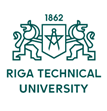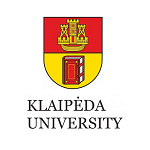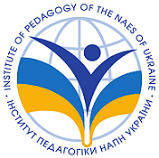SOCIAL REHABILITATION OF FAMILIES WITH CHILDREN WITH DISABILITIES THROUGH THE ORGANIZATION OF MUTUAL ASSISTANCE GROUPS
Last modified: 26.02.2021
Abstract
The article tells about the experience of the state budget institution of social services of the Pskov region "Rehabilitation center for children and adolescents with disabilities" from Velikiye Luki in the rehabilitation of children and adolescents aged 0 to 18 years with disabilities in mental and physical development, ensuring their fullest and timely social adaptation to life in society, family, education and work through the organization of mutual assistance groups. The effectiveness of this form of work with a family raising a child with disabilities is shown by teaching parents to understand their children, identify their abilities and needs for their further development. These theoretical positions were confirmed by experimental work that took place in three stages, including the social project "All together" with an inclusive component, which allowed to develop the huge internal potential of families raising children with disabilities for their more effective rehabilitation.
Keywords
References
Ananyev, B.G. (2001). Man as a subject of knowledge-St. Petersburg. Russia: Piter.
Bollnow, O.F. (1983). Anthropologische Pädagogik O.F.Bollnow. Bern. Switzerland: Stuttgart.
Borovaya, L.P. (1998). Social and psychological assistance to families with seriously ill children. Social and pedagogical work, 6, 59-63.
Dobrovolskaya, T.A., & Shabalina, N.B. (1991). Disabled People and society: socio-psychological integration. SOCIS, 1, 21-23.
Eidemiller, E.G., Justickis V. (2002) Psychology and psychotherapy of the family. St. Petersburg: Peter.
Inter-municipal seminar on the results of the implementation of the innovative social project "We are together" (2020) YouTube September 20, 2020 Retrieved from: (https://www.youtube.com/watch?v=q2NTc3pIzoc&feature=youtu.be)
Harvey, D. (2006). The Right to the City. In: Harvey, D. Divided Cities: The Oxford Amnesty Lectures. ed. Richard Scholar. Oxford: Oxford Univ. Press, 83–103.
Luzina, L.M. (2001). Being (ontological) approach to education. Moscow. Russia: Research center for quality problems of training specialists.
Luscher, M., & Scott, I. (1971) The Liischer Color Test. New York: Pocket Books.
Maslow, A. (2010). Motivation and personality. Petersburg: Russia: Piter.
Mastukova, E.M. & Moskovkin A.G. (2002). What is most important in the upbringing of a child with cerebral palsy. Education and training of children with developmental disabilities, 3, 55-63.
Mayramyan, R.F. (1976). Family and mentally retarded child. autoref. dis. ..candidate of pedagogical Sciences. Moscow. Russia.
Nirje, B. (1994). The Normalization Principle and Its Human Management Implications. The International Social Role Valorization Journal, 1, 2, 19-23.
Rogers, K.A. (1998). Look at psychotherapy. Becoming a person. Moscow. Russia: Progress.
Tarandek, T. (2017). Some Aspects of Independent Life of Persons with Disabilities. Revija za socijalnu politiku, 24, 301–319.
Tkacheva, V.V. (2014). Family of a child with disabilities: diagnostics and counseling. Moscow. Russia: national book center.
Vysotskaya, O.M. & Mostovoy, D.Yu. (2001). Pedagogical preparation of parents for rehabilitation of a child with cerebral palsy. Moscow. Russia: Soyuz.
Yarskaya-Smirnova, E.R. & Naberushkina, E.K. (2004). Social work with disabled people. Saint Petersburg. Russia: Piter.








